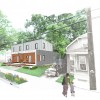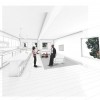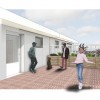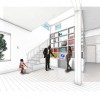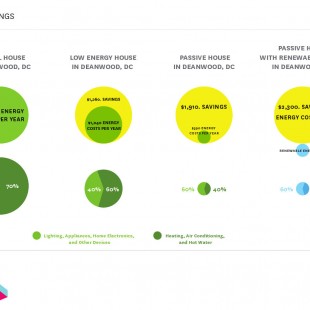2011 Solar Decathlon: A Vision Beyond the National Mall
Video
Empowerhouse: a collaboration between Parsons The New School for Design, Milano The New School for Management and Urban Policy, and Stevens Institute of Technology
The Solar Decathlon competition requires teams to meet pages of rules, so not much time remains for considering what will become of the houses following their debut on the National Mall. However, the students of Parsons The New School for Design, Milano The New School for Management and Urban Policy, and Stevens Institute of Technology have a definite post-competition plan in mind: to provide housing for two families in the Deanwood neighborhood of Ward 7 in Washington, DC. The team has partnered with Habitat for Humanity and DC's Department of Housing and Community Development to build Empowerhouse, an affordable model for living that uses passive design strategies.
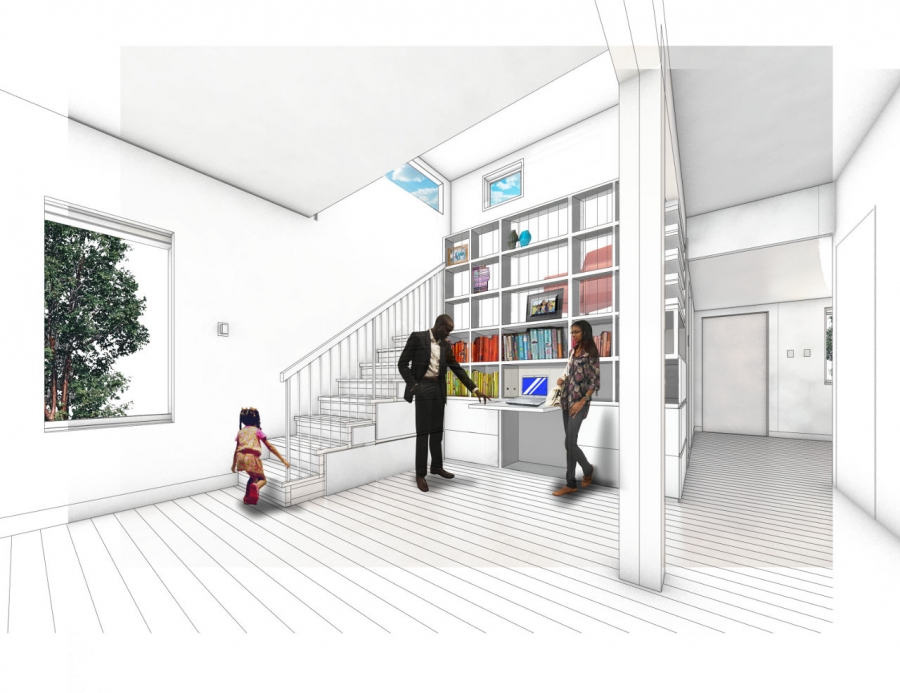
While most Solar Decathlon homes are designed for suburban or rural environments, Empowerhouse is uniquely tailored for a narrow urban lot. In accordance with competition guidelines, the Decathlon design contains only 1,000 sq. ft. (92.9 m2). The one-bedroom modular home will be prefabricated on Stevens' Hoboken campus and then shipped by truck and assembled on the National Mall. However, when the competition is over, the house will then be moved to a site in Deanwood and expanded into a more practical two-bedroom layout. It will be joined with a second two-bedroom unit, constructed on site by Habitat for Humanity workers and volunteers. The end result is a duplex unit that includes a roof garden, a model that is easily replicated for other Habitat for Humanity projects.
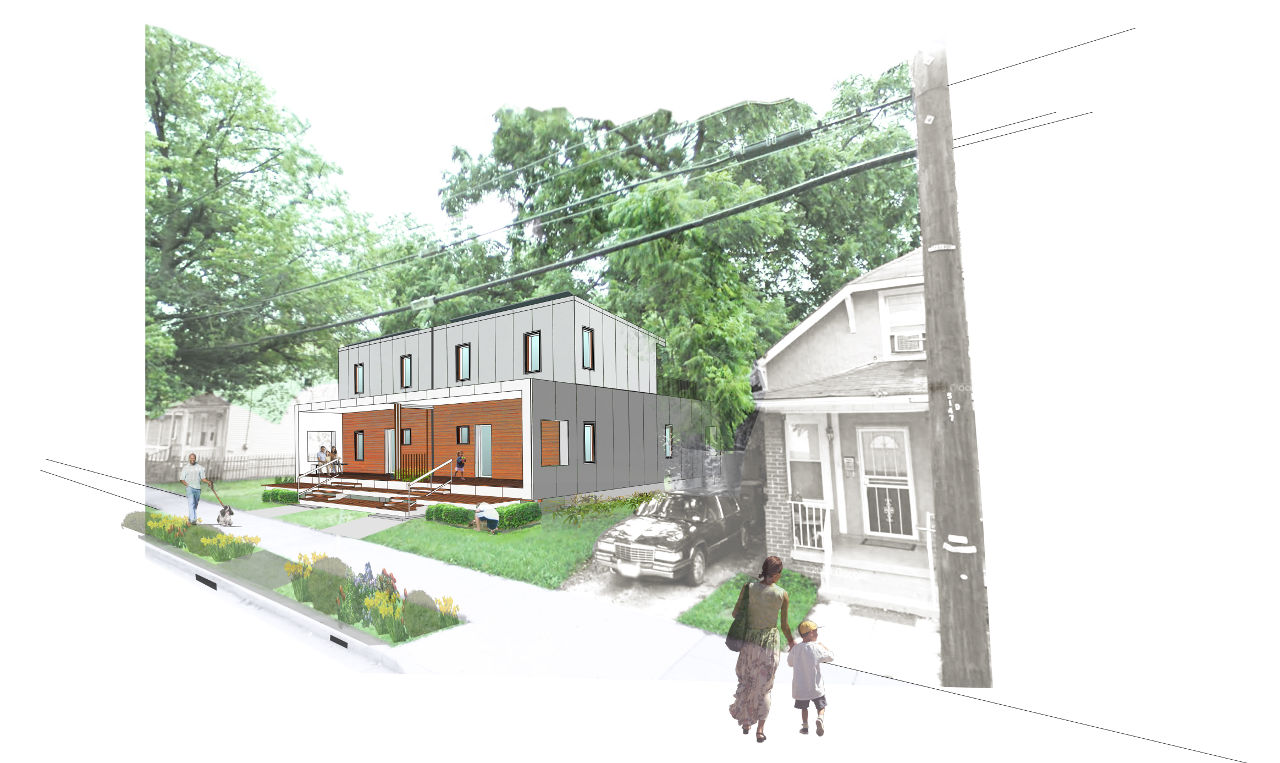
Through research, the team had identified the Deanwood neighborhood as an "area of need" due to its high rates of foreclosure on housing. The team was also drawn to the neighborhood because of its record of community activism and interest in sustainable design. With guidance from their partner, Advisory Neighborhood Commissioner Sylvia Brown, they zeroed in on the site, which benefits from southern sun exposure.
For the home's exterior, the team drew inspiration from the existing architectural character of the neighborhood, which is populated with early 20th century brick and wood frame homes and benefits from a lively porch culture. The aesthetic of the Empowerhouse, however, is decidedly modern, and it was "designed with assemblage in mind," according to Carly Berger, M. Arch. candidate at Parsons The New School for Design. The form features a C-shape clad in cement board siding that "wraps as if embracing the inside of the building," explains Berger. The other three sides of the building will be clad with wood siding.
"Like deciding what to draw on a blank sheet of paper, it is impossible to design without constraints. Working with our client has added constraints that have given our project tremendous context and allowed us to fine tune our design accordingly. We are able to think beyond designing a competition house and design a real home for a real family." Carly Berger, Empowerhouse
The interior of the Empowerhouse features an open floorplan to encourage family interaction. It is organized efficiently with a "living module" along one side, and a 'service module' along the other that contains the kitchen, bathroom and storage. These spaces are divided by a central corridor that extends through to the backyard. The stairwell, which leads to the roof deck, functions as a light well and also houses millwork for storage and workspace, as well as a slide-out bed for guests.
Though the Empowerhouse will rely on a small 5 kilowatt photovoltaic system to meet its energy needs, passive design strategies make the house as energy efficient as possible. Students followed principles of the Passive House movement, which was founded in Germany and emphasizes a highly insulated, air-tight envelope. To that end, the home will feature thick walls constructed of prefab insulated panels. Students carefully placed the windows, which will be triple-glazed, in order to maximize light and minimize heat loss. Because the envelope is so tight, a heat recovery ventilator will be necessary to provide fresh air. Other sustainable technologies that will be incorporated are a heat pump water heater and rainwater collection to irrigate the garden and vegetable containers on the roof. Since potential homeowners might not be familiar with these technologies, students are assembling a user's manual, according to Heather Zanoni, a student in the Milano The New School for Management and Urban Policy.
From community outreach to the coordination between two schools and various departments, the Solar Decathlon competition has established a new educational model. Laura Briggs, Chair of Sustainable Architecture and Assistant Professor of Architecture, Interior Design and Lighting at Parsons believes that the program could change the educational curriculum permanently. Though completing the Deanwood duplex project on top of the Solar Decathlon competition adds additional work and levels of complexity, students have found it to be rewarding. "Like deciding what to draw on a blank sheet of paper, it is impossible to design without constraints," believes Carly Berger. "Working with our client has added constraints that have given our project tremendous context, and allowed us to fine tune our design accordingly. We are able to think beyond designing a competition house and design a real home for a real family."

Murrye Bernard
Murrye is a freelance writer based in New York City. She holds a Bachelor's degree in Architecture from the University of Arkansas and is a LEED-accredited professional. Her work has been published in Architectural Record, Eco-Structure, and Architectural Lighting, among others. She also serves as a contributing editor for the American Institute of Architects' New York Chapter publication, eOculus.
Website: www.murrye.com
